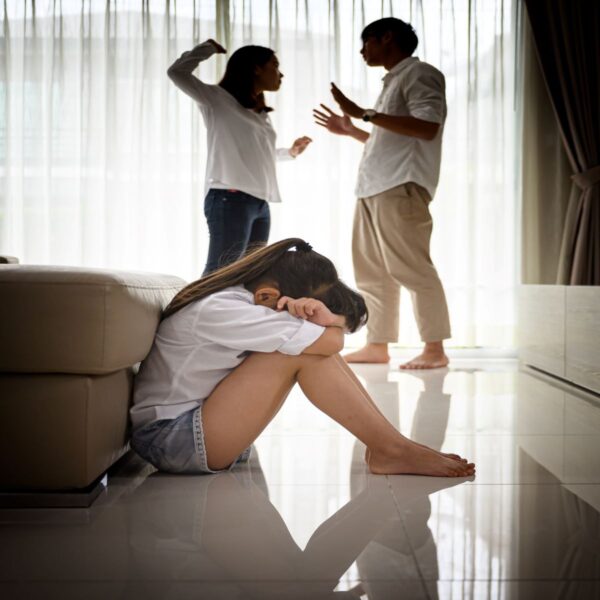University of South Australia (UniSA) childhood adversity experts warn that unless major funding and resources are redirected to prevent child abuse and neglect, as well as provide effective social and therapeutic services to people with histories of abuse, the intergenerational cycle of abuse will not be broken.
Professor Leonie Segal said in a UniSA release on Thursday it is paramount that authorities recognise the connections between childhood abuse and family violence later in life, and stressed that family violence, including familial child abuse and neglect, is a major public health and social issue.
“It affects more than 20 per cent of the population and shapes every aspect of a person’s life, from their physical and mental health to their education, ability to interact with people, employment, and even criminal involvement,” she said.
“Yet what many authorities fail to understand is that child abuse is inextricably linked with violence later in life, and if we don’t respond appropriately to one, we will have little impact on the other.
“If more were done to help victims of child abuse while they’re still young, we could better disrupt pathways of abuse and stop victims becoming caught up in continuing cycles of violence,” she added.
According to an Australian Bureau of Statistics (ABS) report from 2019, approximately 2.5 million Australian adults (13 percent) had experienced either physical or sexual abuse during their childhood.
Among other negative outcomes, people who had experienced childhood abuse were twice as likely to experience violence as an adult compared to those who did not suffer abuse, and three times more likely to experience partner violence.
Causal Relationship Between Child Abuse and Family Violence
Segal said the evidence of abuse as a child leading to family violence later in life is “unmistakable”.
“For example, children whose mothers have been the subject of substantiated child abuse or neglect have 10 times the risk of being the subject of substantiated child abuse themselves, and nearly 20 times the risk of being removed into out-of-home care due to imminent and serious safety concerns,” she said.
She also noted that child abuse and neglect does not discriminate between males and females, and both can be involved in family violence as a victim or perpetrator.
“Too often media attention, and therefore public opinion, focuses on gendered violence, yet we know that both genders are affected equally as children, and mothers are the more likely perpetrator,” Segal said.

“In Australia, some 17 percent of women and six percent of men report ever being exposed to physical or sexual violence from an intimate partner, while 23 percent of women and 16 percent of men report ever experiencing emotional abuse by an intimate partner.
“What must be recognised is that family violence can affect anyone, and that the cycle of abuse almost always begins in childhood,” she said.
Broadening the Discussion
Segal said it’s essential to “broaden the discussion” about the causal relationship, but it must be done safely by recognising the pathways into violence and the evidence available.
“This logically leads to the need to better support infants, children and young people who are exposed to child abuse and neglect as a key component of any strategy for the prevention of family violence,” she said.
Meanwhile, the South Australian Minister for Child Protection, Katrine Hildyard, stressed that to achieve real change, a whole of government and whole of community approach is needed, focusing on child safety and wellbeing.
“We must change and deepen the public discourse to ensure that there is a better understanding of the risk and tension that the child protection system carries,” she said in the UniSA release..
“Among the many actions required to meet these challenges is the need to develop deeper community engagement with, and understanding of, the complexity and interconnectedness of issues that families face and have an impact on children’s safety, such as domestic and family violence, mental ill health, poverty and unemployment, intergenerational trauma, drug and alcohol misuse, and cyber-based crime, as well as the continuing impacts of the COVID-19 pandemic.”
Hildyard said the SA government’s recent investment in child protection as part of the state budget reflects the deep commitment needed to improve the system.
“We are also working collaboratively with other parts of government and key stakeholders and service providers in the community to ensure that we are providing the right kind of support and resourcing to intervene with at-risk families at crucial times, and to build their capacity and capabilities,” she said.
Segal spoke earlier in June at a seminar titled “Disrupting the pathways into family violence”, the recording of which can be accessed here.
"cycle" - Google News
July 02, 2022 at 06:35AM
https://ift.tt/d65zNaW
Protecting Children to Stop the Cycle of Family Violence - The Epoch Times
"cycle" - Google News
https://ift.tt/o5sGkSc
https://ift.tt/95AP2hY
Bagikan Berita Ini














0 Response to "Protecting Children to Stop the Cycle of Family Violence - The Epoch Times"
Post a Comment